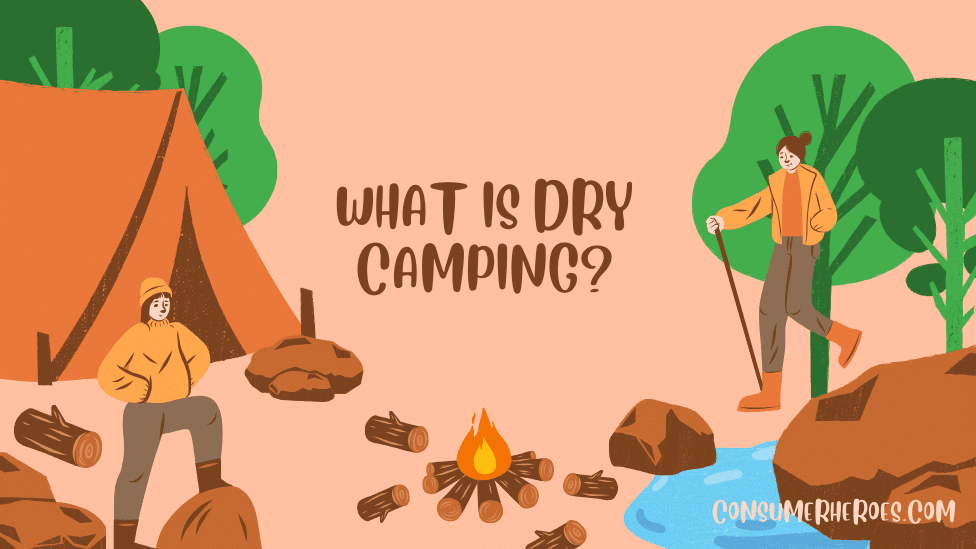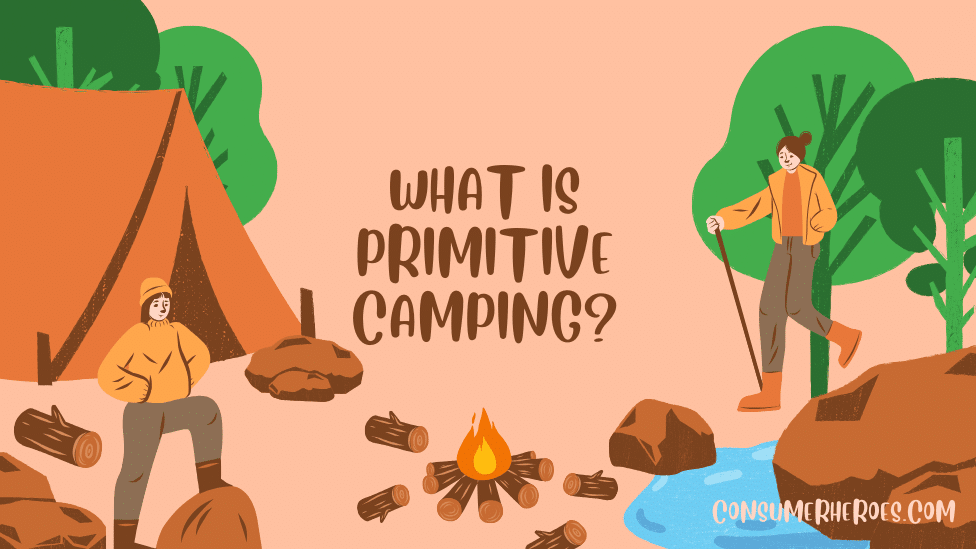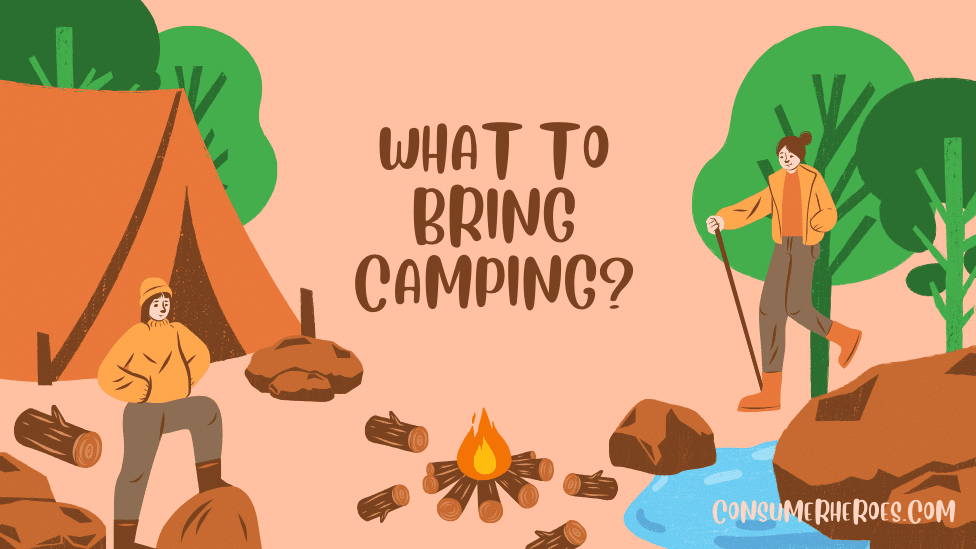Dry camping is a term used to describe camping without any hookups or access to external resources. This means no water, electricity, or sewer connections. Dry camping is a popular way to camp for those who want to get away from the hustle and bustle of everyday life and enjoy nature in its purest form.
Dry camping can be done in a variety of locations, including national parks, state parks, and private campgrounds. Some people choose to dry camp in remote locations, such as on Bureau of Land Management (BLM) land or in the wilderness. Dry camping requires more preparation and planning than traditional camping, as campers need to bring their own water and power sources. However, the reward of being able to camp in remote and beautiful locations without any distractions or interruptions is well worth the effort.
What is Dry Camping?
Dry camping, also known as boondocking, is a type of camping where you do not have access to any external amenities such as water, electricity, or sewer hookups. It is a popular choice for campers who want to get away from the crowds and enjoy the great outdoors in a more secluded and peaceful environment.
In dry camping, campers rely on their own resources to meet their basic needs such as water, food, and power. This means that they must bring their own water supply, food, and cooking equipment. They also need to have a reliable power source such as a generator, solar panels, or a battery bank to power their appliances and devices.
One of the biggest advantages of dry camping is the opportunity to camp in remote and beautiful locations that are not accessible by RVs with full hookups. It allows campers to experience nature in its purest form and connect with the environment on a deeper level.
However, dry camping also requires a certain level of preparation and planning. Campers need to ensure that they have enough water, food, and power to last for the duration of their stay. They also need to be mindful of their waste and dispose of it properly to minimize their impact on the environment.
Overall, dry camping is a great way to disconnect from the hustle and bustle of everyday life and enjoy the beauty and serenity of nature.
Benefits of Dry Camping
Cost Efficient
One of the main benefits of dry camping is its cost efficiency. Since dry camping does not require any hookups, campers can save money on camping fees. Additionally, campers can save money on gas by not having to drive to campgrounds with hookups. This makes dry camping an ideal option for budget-conscious travelers who want to experience the great outdoors without breaking the bank.
Connection with Nature
Dry camping also offers campers the opportunity to connect with nature in a more intimate way. By camping in remote locations, campers can experience the natural beauty of the wilderness without any distractions. This can be a great way to unwind and recharge from the stresses of everyday life. Additionally, dry camping can provide opportunities for wildlife watching and stargazing, which can be difficult to do in more developed campgrounds.
Flexibility and Freedom
Another benefit of dry camping is the flexibility and freedom it provides. Since dry camping does not require any hookups, campers can camp in more remote locations that may not be accessible to RVs or trailers with hookups. This can provide campers with unique and secluded camping experiences that they may not be able to find in more developed campgrounds. Additionally, dry camping allows campers to set their own schedule and itinerary, without having to worry about campground rules or regulations.
In summary, dry camping is a cost-efficient, nature-focused, and flexible way to camp. By foregoing hookups and camping in more remote locations, campers can save money, connect with nature, and experience unique and secluded camping experiences.
Challenges of Dry Camping
Dry camping can be an exciting and rewarding way to experience the great outdoors. However, it also comes with its own set of challenges. Here are some of the most common challenges that campers may face when dry camping.
Lack of Amenities
One of the biggest challenges of dry camping is the lack of amenities. Unlike traditional campgrounds, dry camping sites typically do not have access to electricity, water, or sewer hookups. This means that campers must be self-sufficient and bring all of the necessary supplies and equipment with them.
To overcome this challenge, it is essential to plan ahead and bring everything that you need. This may include a portable generator, water storage tanks, and a composting toilet. It is also important to conserve resources, such as water and fuel, to ensure that you have enough to last your entire trip.
Conservation of Resources
Conservation of resources is another significant challenge of dry camping. Without access to traditional amenities, campers must be mindful of their resource usage. This includes water, fuel, and food.
To conserve resources, campers should take shorter showers, turn off lights when not in use, and avoid running generators unnecessarily. It is also important to pack food that does not require refrigeration and to bring reusable containers and utensils to minimize waste.
Safety Considerations
Finally, safety considerations are an important challenge of dry camping. Without the security and protection of a traditional campground, campers must be vigilant and take precautions to ensure their safety.
This may include bringing a first aid kit, a fire extinguisher, and a GPS or map. It is also important to be aware of potential hazards, such as wildlife and extreme weather conditions, and to take appropriate measures to prevent accidents or injuries.
Overall, dry camping can be a challenging but rewarding experience for those who are prepared. By planning ahead, conserving resources, and taking safety precautions, campers can enjoy all that nature has to offer while still enjoying the comforts of home.
Essential Gear for Dry Camping
When planning a dry camping trip, it’s important to have the right gear to ensure a comfortable and safe experience. Here are some essential items to consider:
Water Storage and Purification
One of the most important things to consider when dry camping is water. It’s crucial to have enough water for drinking, cooking, and cleaning. Here are some items to consider:
- Water containers: Bring enough water containers to store all the water you’ll need for your trip. Collapsible containers are a great option as they take up less space when empty.
- Water purification system: A water filter or water purification tablets can help ensure that any water you collect from natural sources is safe to drink.
Energy Sources
When dry camping, there are no electrical hookups, so it’s important to have alternative energy sources. Here are some options:
- Solar panels: Solar panels can help keep your devices charged and power small appliances.
- Portable generators: A portable generator can provide a reliable source of power for larger appliances and devices.
- Power banks: Power banks are a great option for charging smaller devices like phones and tablets.
Camping Stove and Fuel
Cooking while dry camping can be a fun and rewarding experience, but it’s important to have the right stove and fuel. Here are some options:
- Propane stove: A propane stove is a popular option for dry camping as it’s easy to use and provides consistent heat.
- Wood-burning stove: A wood-burning stove is a great option for those who want to cook with natural fuel sources.
- Fuel canisters: Make sure to bring enough fuel canisters for your stove, as well as a backup in case you run out.
By having these essential items, dry camping can be a fun and enjoyable experience.
Tips for a Successful Dry Camping Experience
Location Selection
When it comes to dry camping, choosing the right location is crucial. It’s important to find a spot that is legal for camping, safe, and has the necessary amenities. Here are a few tips for selecting the perfect spot:
- Research the area beforehand to ensure that camping is allowed and that there are no restrictions or permits required.
- Look for a spot that is level and has good drainage to avoid flooding in case of rain.
- Check if the location has access to potable water, dump stations, and restrooms if needed.
- Choose a spot that is away from busy roads, wildlife habitats, and other hazards.
Leave No Trace Principles
Dry camping is all about enjoying the great outdoors while leaving no trace behind. Here are a few principles to follow to ensure that you are being a responsible camper:
- Pack out all trash, including food scraps and litter.
- Use biodegradable soap and avoid contaminating natural water sources.
- Respect wildlife and their habitats by keeping a safe distance and not feeding them.
- Avoid damaging vegetation and trees by staying on established trails and campsites.
Weather and Terrain Awareness
Dry camping can be challenging, especially in extreme weather conditions. Here are a few tips to stay safe and comfortable:
- Check the weather forecast beforehand and prepare accordingly. Bring appropriate clothing, gear, and shelter for the conditions.
- Be aware of the terrain and potential hazards such as flash floods, rock slides, and wildfires.
- Stay hydrated by drinking plenty of water and avoid overexertion in hot weather.
- Bring a first aid kit and know basic first aid in case of emergencies.
Remember that dry camping is all about being self-sufficient and responsible. By following these tips, you can have a successful and enjoyable camping experience while minimizing your impact on the environment.







